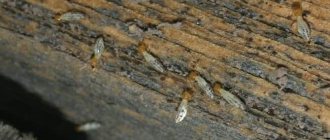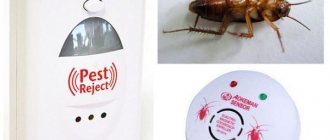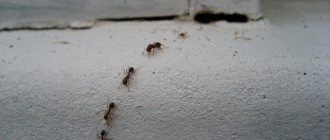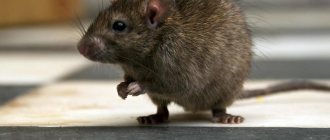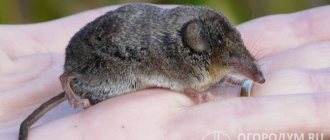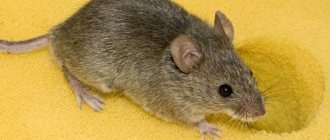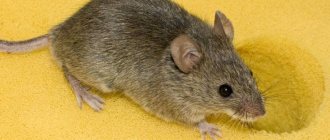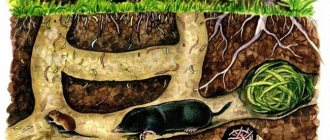The ferret is a carnivorous animal that feeds on birds, hares, eggs, small reptiles and amphibians. In the summer, when there is a lot of all kinds of living creatures in the forests and fields, ferrets prefer to live and hunt there. But with the onset of winter, especially cold, ferrets can make their way closer to human habitation and get food in barns and stables.
General characteristics of the predator
Ferrets belong to the mustelidae family of mammals. Ferrets have an elongated body and are particularly flexible and agile. These animals are excellent at climbing the tallest trees and digging deep holes. Males are slightly larger than females.
The habitats are very different, it depends on the type of animal. Ferrets often move closer to human habitation. There are usually two types of ferrets found in Russia - the steppe white and the forest black. Under favorable conditions, ferrets lead a sedentary lifestyle in their own territory. And only hunger can push them to human habitation, where there is always food for them.
The basis of any ferret's diet is food of animal origin. They hunt and eat birds, rodents, insects, reptiles and even poisonous snakes. A ferret will never miss a nest with eggs. He will drink them all and destroy the nest. Large individuals can become a real threat even to hares and muskrats.
Thanks to their agility and endurance, ferrets can pursue their prey for a long time. But, as a rule, they prefer to watch for prey near its own hole. The peak of hunting occurs at night, but if night hunting is not successful, the ferret will do it during the day. Ferrets are not attracted to plant foods.
Ferret lifestyle
Ferrets are naturally active, curious, and have an excellent memory. The latter quality is precisely what contributes to the fact that the predator will come again and again to the same chicken coop, where he has already successfully obtained food once. Hunting is not particularly difficult for a ferret, since by nature it has an excellent ability to swim, climb trees, run fast and dig the ground.
At the same time, in the wild, ferrets are very aggressive. They have their own enemies. For example, they are afraid of foxes, wolves, large snakes and large birds (owls, golden eagles). Thanks to their agility, ferrets often escape from being chased, and they also have a secret weapon. This is a special liquid that they spray during severe fright. Ferrets have special glands under their tail that produce this unpleasant-smelling liquid. This substance will scare away any enemy.
What does a ferret look like?
There are several varieties of this mammal, but they all have common features.
- The body is elongated and squat with short muscular legs.
- The fingers have long and sharp claws.
- The head is a neat oval shape on a long and flexible neck.
- A fluffy tail is a source of pride for an animal.
- Thick and soft fur, shiny in the sun, can be of different colors.
- The teeth are sharp and strong.
According to all these characteristics, the ferret is an attractive fluffy animal with the incredible ability to move quickly by jumping, deftly climb trees, swim wonderfully and bite well.
Ferret habitat
The ferret is a predator. It settles almost everywhere, but prefers to live on the edges of the forest, so that there is a body of water nearby. Ferrets live in burrows that they make themselves, or they occupy burrows made by other animals and abandoned by them.
The ferret is difficult to find in dense forests; the animal does not like too dense forests. Animals prefer small forests or groves located near human habitation. The ferret does not like to wander from place to place. This is what distinguishes males: each of them has its own strictly defined territory and it is extremely undesirable for them to appear in a foreign area. Females are more loyal in this regard: they can live anywhere and not feel much discomfort. A male can walk about 5 km per night - this suggests that their hunting grounds are very extensive.
Ferrets' burrows are not very deep, usually there is one tunnel and a nesting site at the end. Ferrets can make their shelters in abandoned burrows of badgers and foxes. Sometimes a ferret settles right next to a person. Here he will probably have a nest in some barn, but in a secluded place. Usually, forest ferrets climb into barns, because steppe ferrets try to avoid human habitation.
The steppe ferret lives almost in open areas. In terms of area of settlement, the steppe ferret surpasses any other steppe animal. In the steppes, ferrets make abandoned gopher burrows for themselves. Such a hole can save the animal from both the summer heat and the winter cold. There is no way to live without a hole in the steppe: you can easily become the prey of another, larger predator. Steppe ferrets do not have a strictly defined territory.
Fellow saboteurs
Special mention should be made of the ferret's closest relative, the weasel. Things are more complicated with her. It is so flexible and fidgety that it fits into holes 2–3 centimeters in size.
- Only strengthening the foundation and floor will not save you: the entire room will have to be sealed.
- It is better to seal holes in walls and ceilings with cement.
- If the structure is wooden, then put patches made of wood or iron in places of possible penetration.
- Polyurethane foam and soft sealants are useless; soon there will be a gaping hole in this place again.
Weasel . Weasel is the smallest representative of predators in the world, which is distributed everywhere. She is fearless and aggressive, even a person cannot scare her away. It easily and quickly deals with rodents, snakes, frogs, and birds. Despite her cute face, she is a disaster for poultry farmers, as in a short period of time she can kill the entire population of birds.
Marten . Another fellow pest is the marten, although it tries not to get close to human settlements, preferring to live in forests. She settles in hollows and spends a lot of time moving through the trees. Outwardly similar to a ferret, but a little larger in size and has an incredibly beautiful large tail and valuable fur skin.
Since the animal will defend its life and become very aggressive, special care should be taken when removing the ferret from a trap or trap.
Vital signs of a ferret in the barn
Conversations that a ferret can destroy many chickens in a barn in one night are not groundless. This is true. Once in the barn, the ferret begins to hunt. Moreover, he does not eat the whole of a single caught chicken. He strangles them one by one and drinks their blood, partially eating them. This is a harmful trait in ferrets. Moreover, having entered into the excitement of the hunt, the ferret will not be afraid even of a large turkey or goose. However, there are some signs by which ferrets reveal themselves even before the destruction of the bird. They can be found if you carefully monitor the behavior of the barn's inhabitants.
These signs include:
- Chickens show unusual timidity: they huddle together on the upper perches, and are in no hurry to go down even when the owner gives food. This can only mean one thing: they have already sensed that a predator is wandering somewhere nearby. This sign can be 100% confirmation that there is a ferret somewhere nearby.
- The unusual crowding of birds indicates that they are very frightened.
- Even at night in the dark you can hear screams. With its sensitive hearing, the bird hears the predator’s attempts to get inside, so the noise immediately begins. Even the appearance of a person does not stop this alarmed cry.
- If it is winter, then you can easily find characteristic footprints in the snow. Experts can already understand from the tracks that a ferret has been in the chicken coop or has just tried to get there.
When the ferret has already been in the barn, it will not go unnoticed. Smothered chickens can be found everywhere. The ferret first drinks blood and eats the head and paws of the victim. Already in the presence of the above-described signs, measures need to be taken, since any night the ferret can get inside - it’s just a matter of time. If alarming signs appear, the chickens should be removed to a safe place and measures should be taken to get rid of the ferret. If the ferret has already killed the bird, a new one is not introduced until the predator is caught.
The use of homemade products
If it is not possible to use ready-made traps, then you can use homemade devices. But you shouldn’t delay making them, otherwise the ferret will soon kill a large number of poultry.
If you follow all the rules when making homemade products, they will protect the chicken coop just like the original devices. There are two options for homemade traps:
- To make a homemade trap you will need a box or cage. You need to place bait inside this item; you can use a piece of fresh meat as it. In this case, the door needs to be adjusted; when an animal gets inside, it should close immediately. After catching an animal, we get rid of it immediately; it is better to take it far into the forest and release it;
- You can use a regular metal bucket as a trap. Bait is placed at the bottom of the bucket - a dead chicken carcass. Traps are placed around the perimeter. Even if somehow the ferret manages to bypass all the traps and get into the bucket, he will still back away when pulling out the prey and get caught in the trap.
If you set up a safety trap and bait, be careful not to let your beloved pets get caught in it. It is best to carefully monitor them and not allow them into the territory with these devices.
Ferret danger
It is precisely in the fact that the destruction of birds is usually massive that the main danger of the ferret lies. Even if he doesn’t destroy everyone at once, he will return to his beloved barn again. If something frightens him one night, he will still come the next night. A small hole is enough for a ferret to get inside. The peculiarity of the skeleton is such that if the head penetrates, the ferret will crawl through completely.
Even rats are not as dangerous as ferrets. There are cases when there were aggressive roosters among the birds and they could destroy the predator themselves, but such situations are very rare.
Important! The ferret attacks aggressively, in one leap. He strangles the victim with his paws, and then begins to suck the blood.
The greatest danger is that if the ferret is not caught, he will never forget the way to the hen house.
Why are ferrets and weasels dangerous for chickens?
Ferrets are predators with an elongated body shape, predominantly dark in color with squat legs and a rather long tail.
Small animals have such a developed predator instinct that if they enter the chicken coop, they will strangle all the chickens, even if they are not hungry. However, predators do not always manage to get into the chicken coop, but even when they approach, the chickens begin to really panic. Birds are able to smell a predator from afar and fall into real depression; here they will no longer have time for eggs.
After a ferret's short stay near the chicken coop, hens may refuse to hatch eggs and even abandon their offspring to their own devices.
It is quite possible that the rooster will forget about his direct responsibilities for a while.
Ferret habits
In order to more successfully fight the enemy, you need to study his habits. Ferrets in this case are no exception; a person must know the characteristics of this predator in order to more effectively combat it. In particular, there are two unusual habits:
- The ferret will staunchly defend its territory, and it does not matter at all what kind of enemy invaded it. Having lost its territory, a ferret can quickly say goodbye to life, since it will have nowhere to hunt and hide.
- Ferrets have a naturally weak heart. It happens that a predator caught in a trap dies from an excessive release of adrenaline into the blood - its heart simply cannot cope with such a load.
Traps
Any device for catching a ferret must be installed at night; this is important, given the nocturnal lifestyle of this predator. The traps must be placed so that the bird cannot fall into them even when panic begins in the barn due to the appearance of an uninvited guest.
Before loading the trap, it should be treated with a special composition that will destroy the repellent human odor. This can be slaked lime or even ordinary manure. If the dug hole is already clearly marked, then the trap is placed right next to the exit from it.
The trap should be sensitive and bait should be placed there. It could be bird blood. You can also catch ferrets using a strong rat trap; it can deter the predator. In order to give the rat trap additional weight, it needs to be mounted on a large board. It is better not to place small rat traps: the ferret will turn them over and easily free himself, and subsequently it will be easy to bypass such traps.
What is the basic description of the animal?
The ferret is a nocturnal predator. Dangerous for chickens and geese. The representative is not able to carry away heavy prey, so half-eaten carcasses remain in the poultry house.
The body length reaches 40-45 cm. The animal has an aggressive attack style. The representative sneaks up on the victim unnoticed and strangles him with his paws. After the strangulation, the meal begins. For dessert, the predator leaves small chickens. The basis of the diet is chickens.
The animal is greedy. The predator destroys more birds than it can eat. Dead birds are not suitable for further use, much less sale.
Pets
Cats and dogs can handle a ferret in some cases. And even if they don’t catch the predator, at least they won’t let him run the chicken coop in peace. Not every cat or dog can manage to catch a nimble ferret, but sometimes they succeed. Hunting dogs and cats that crush rats are good in this regard. Such animals are not afraid of predators; hunting is a natural process for them. Such pets must be vaccinated against rabies.
But, unfortunately, not every pet is accustomed to hunting: in most cases, the animal itself will be afraid of the predator. A good option against predators is domestic ferrets. On their territory they can catch and kill a wild animal. Poultry is of no interest to domestic ferrets, since they do not suffer from hunger. But even a pet should not be allowed into the chicken cage.
Prevention or how to secure a poultry house?
As a preventative measure for the chicken coop and to save the livestock, birds are recommended to regularly inspect the premises for the presence of fresh holes in the walls, roof or tunnels. A high-quality concrete floor will solve the problem of furry visitors entering through holes, and external partitions lined with iron at the bottom of the chicken coop will prevent it from chewing through the floors.
Professionals try to build poultry houses above the ground, placing it on stilts. Additionally, a fine mesh is dug in along the bottom of the perimeter to a depth of 50-70 cm. This will protect the room from penetration from below.
In order not to once again attract the attention of natural hunters, it is not recommended to make a dump near the outer wall of the poultry house or to store empty boxes and crates for a long time. It is not advisable to dump manure nearby or use fish remains as fertilizer. Since this can attract not only a ferret or weasel, but also a fox, which is more difficult to repel.
By detecting the uninvited guest in time and preventing his further visits, the owner will protect his birds. If you try to tame a ferret, you can get a faithful guard and a beautiful friend.
Homemade trap
In order to quickly take measures to catch a predator in the chicken coop, many farmers make homemade traps. These include:
- A bucket/box raised above the ground at one end, under which a support is placed. Some kind of bait is placed under it that can attract the ferret. The effect is designed for the ferret, interested in the bait, to knock down the support and be covered with a bucket or box. This simple method is quite productive, but there is one significant drawback: the ferret can get out of there. It costs him nothing to turn the bucket over.
- A cage with a vertically falling door. The mechanism is also quite simple: the door is connected by a rope to the bait, and as soon as the ferret begins to engage with the bait, the door falls. In order for a predator to come to the bait, you need to put a piece of meat dipped in blood.
Such methods are effective. But after the ferret is caught, no less caution should be exercised. First of all, this is due to the fact that ferrets are often carriers of rabies. You need to be very careful when removing them from the trap. They have powerful jaws. It is not difficult for them to bite through the skin and joints. Therefore, you need to act in thick mittens or gloves that cannot be bitten.
If the bite could not be avoided, and the ferret tightly clung to the hand, it should not be torn off. You need to try to pinch his nose and then insert a stick between his teeth - you can then use it to open his jaws.
Important! After being bitten, you must go to a medical facility and get vaccinated against rabies. The animal must be sent to a veterinary laboratory.
If a ferret is caught in a trap, a person is faced with the question of whether to kill it or release it. Here everyone is free to do as they please. But if the idea arises of releasing the predator, it must be taken as far into the forest as possible so that it cannot return.
Methods of struggle (humane and inhumane)
A ferret can be “domesticated”, but this is not advisable if there is a bird on the farm.
Experts say that it is very difficult to keep a ferret away from the yard. He will perceive any half measures as natural obstacles and courageously overcome them. Preventive measures against such a neighborhood are well known:
- thorough repair of walls and floors in the chicken coop and rabbitry;
- clearing clutter from the yard from boards, boxes and similar debris as places for the animal to hide;
- if a dog lives in the immediate vicinity of the poultry house, the ferret will not risk its skin;
- Natural openings into the chicken coop should be tightly closed at night - the windows are barred, the vents are closed, there are no gaps on the threshold.
If it was not possible to avoid the attack and the time has come to fight the pest, and the ferret is a pest, it is necessary to act immediately. There are two methods - traps and traps. In winter, ferret trails are easy to track. We need to pay attention to them.
To catch a ferret, trap No. 1 is traditionally used; with higher arches it is impractical, as it can grab the animal by the body, which only causes injury, but does not hold the animal. A sensitive sense of smell will warn the robber about the presence of a new metal object on the way to the prey. The fresh smell of a person’s hands on metal will alert you and will negate all your efforts.
Video: ferret caught in a trap.
Before installation, traps must be ventilated in a natural environment; it is not recommended to install them with bare hands. The use of distracting fragrances in this case is also not recommended. It is better to place traps on the approaches to the poultry house, on paths, in manholes. Setting up with bait requires some skill in trying to outsmart the smart beast.
One of the methods of fishing with bait is to install a trap on a perch, thus we determine in advance for the animal the direction of its movement. At the end of the perch, reinforced with a slight slope, there is a piece of fresh blood meat; a trap is placed between the entrance to the perch and the bait.
Strong doors and no gaps will keep predators away from your shed.
In any case, the installation of the trap is done with arcs towards the animal, with a spring towards the bait, the tongue is alerted sensitively, it is advisable to attach the trap itself not firmly, but tie it to something with a steel chain. The caught animal must have some distance to move.
Repellent
In order to discourage the ferret from visiting the chicken coop, you can use repellers. These are devices that create an uncomfortable environment for predators:
- Electronic devices operating on the ultrasound principle. If such a device is turned on in the room, the predator experiences panic and its only desire is to escape as quickly as possible. He will panic until he leaves the area covered by the device. The uniqueness of such devices is that other animals and birds do not experience the slightest inconvenience from their operation, just like humans. But there is a drawback here: ferrets quickly get used to such inconvenience and cease to feel fear.
- Low frequency repellers. The devices were developed in such a way that predators would not develop addiction. But this device also has a drawback, and a significant one: animals and birds located in its area of action experience severe stress from its influence.
- Light repellers with motion sensors. The action is simple: when a predator appears, the motion sensor is triggered and the flashlight turns on. The ferret, frightened by the bright light, runs away from the chicken coop. There is also a drawback here: the motion sensor covers a certain area. If the ferret does not hit it, the sensor will not work.
Repellers
Today, in specialized stores you can purchase modern devices that can repel predators. They can be:
- light and sound;
- ultrasonic.
Light and sound repellers create audible noise when an animal approaches and blink. They are equipped with motion sensors. The operation of the device begins the moment a warm-blooded creature appears within its range of action. In this case, the infrared sensor is immediately triggered, which provokes the generation of light and sound, which scare away the predator.
The device is compact in size and can operate on either batteries or mains power. Some models may also include an ultrasound generator. Ultrasonic devices produce low-frequency sounds that repel animals. Therefore, the predator will not come close to the place where the device is installed. In addition to ferrets, this device works on mice, rats and moles. There is a wide variety of models. This device is safe for pets (except hamsters and rats) and people. It works both from batteries and from the mains.
Traditional methods
Previously, people tried to fight predators from the forest on their own and used improvised means for this:
- The walls of chicken coops were smeared with tar; it was believed that this smell should repel small pests, like ferrets. But if an animal comes from a tunnel underground, then the walls coated with tar will not become a hindrance for it. In addition, not every ferret dislikes the smell of tar.
- It used to be that goat skin was used to repel ferrets. But this method can rather be attributed to preventive measures. If you hang the skin in a sealed room, it may have an effect.
How to create your own chicken coop
To prevent a predator from getting inside your chicken coop, you need to take care of its protection and strength. Tips and recommendations from experts to help protect the chicken coop from ferrets:
- The base of the chicken coop needs to be filled with concrete, then the predator will not be able to dig under the coop and make a loophole.
- If there are cracks in the walls of the building, the animal can easily get inside.
- The ferret is a dexterous and cunning animal. Floors should be made of tin materials. Cover the floor with sheets of tin. If an animal can make a tunnel, then it will definitely not be able to get into the chicken coop itself.
- If the building consists entirely of wood, then it will not be possible to create a concrete base without damaging the walls.
At this time, you can dig a fine protective mesh around the chicken coop. The total depth of the excavation is half a meter.
Chemicals
Poison baits are another way to control ferrets. In order to prepare them, you need to use protective equipment - a mask and gloves. As bait, you can use the same carcasses of hens and chicks that the ferret has already killed. They should be placed where chickens and other domestic animals cannot reach them.
To prevent the bait from going rotten, you need to treat it with compounds containing substances that promote mummification. A strong poison for baiting rats is suitable as a poisonous filling. Such products can be found on sale in the form of liquid formulations or dragees, as well as lozenges. To lure them, they are provided with a strong smell, to which the ferret will probably not remain indifferent. The disadvantage of this method is that even if the ferret has already been destroyed, the person will not know about it. Most likely, the poisoned animal will run back to its hole and die there.
How to fight a pest using a trap
The farmer must place traps on the plot. The device is pre-treated with special solutions to remove the smell reminiscent of human presence and not scare off a predator.
To catch the pest, you can set a trap
To eliminate human odor, you can choose:
- manure;
- dried lizard skin;
- slaked lime;
- spruce needles for digestion.
After processing, the trap should be handled only with thick fabric gloves. Otherwise, all preliminary preparation will be pointless. The structure is placed near the entrance to the burrow.
It is better to purchase several trap options at once. One of the structures is placed directly in the poultry house. To do this, hang the carcass of a dead chicken on the wall, and place a trap under it.
The trap is set daily until the pest is destroyed.
Preventive actions
It is difficult to fight a ferret, so you need to take all measures to protect the chicken coop from the visit of a dangerous predator:
- The chicken coop needs to be sealed. It is advisable to take care of this already at the stage of its construction. Then you can build a special monolithic concrete foundation; you need to lay sheets of iron under the boards. The inside of the chicken coop walls can be covered with metal mesh, and all cracks can be securely sealed with cement and broken glass.
- Particular attention should be paid to ventilation - a ferret can easily penetrate through it. Therefore, at the construction stage, it is necessary to lay ventilation holes no lower than at a height of 2 m from the ground.
- Make secure doors to the chicken coop that close tightly at night. This is the easiest way to access this room. In the summer, chicken coops are often not closed, and the ferret gets inside without hindrance.
- There should be no piles of unnecessary rubbish in the chicken coop - this is an excellent hiding place for a predator. Even during the daytime he can easily hide there. Every corner of the room should be clearly visible, this minimizes the likelihood of an ambush for a predator. Any piles of rubbish both indoors and around it on the street are an excellent opportunity to hide for a nocturnal predator. He can even arrange a temporary shelter for himself in a pile of old boards or in the trash. At night he will get out of there and operate in the courtyard.
- The chicken walking area should be surrounded around the perimeter with a concrete fence, which is buried about half a meter into the ground.
How to prevent the appearance of a predator in your lands?
Don't want to fight a cunning ferret? Its appearance in your lands can be prevented. It is enough to follow a number of recommendations:
- The animal most often gets inside the house by digging. Therefore, it is recommended to pour a reliable concrete floor. You can also build a wooden covering covered with metal.
- Make sure that the structure has no gaps in the walls, doors, or roof. The roof must be reliable.
- If there is a ventilation system, it is necessary to install a mesh that will prevent predators from entering the room.
- There is no way to make a strong floor? Fence the poultry house with a fine mesh, which must be dug 0.5 m into the ground.
- Keep the area clean. Dumps of old branches and garbage heaps attract ferrets.
If you follow these rules, you may not have to learn how to get rid of ferrets in your home. The main thing is to prevent this cunning animal from entering your domain.
Other predators
In addition to ferrets, other living creatures can enter the chicken coop or buildings in the yard:
- Weasel. The principle of her hunting is approximately the same: she can easily penetrate through the smallest hole or make a tunnel. She can hunt at any time of the day. The chickens' behavior is the same as after a ferret's visit. But there is one difference: after the victim is strangled, the weasel tears it apart. It is almost impossible to catch a weasel. She is cunning and agile, and also merciless. The weasel is a rare guest in the chicken coop. Only severe hunger could push her to take such a step. There are cases where weasels even attacked dogs and cats. Of all the predators that parasitize chicken coops, weasels are the most ferocious and aggressive. But it must be added that even after getting into a chicken coop, a weasel will extremely rarely immediately begin to strangle the chickens. First of all, her attention is attracted by the rats and mice that live there. Only if they are not there, and hunger cannot be satisfied in any other way, will the hunt for chickens and other living creatures begin.
- Marten. The method of penetration into outbuildings is exactly the same as in previous cases. The marten is also a nocturnal guest. But unlike the ferret and weasel, after strangling the victim, it will eat it whole. The marten does not always come to farmsteads due to severe hunger. Often she will simply visit there if there is a suitable yard nearby with easy access to the chicken coop. In addition to animal food, the marten also eats some fruits and berries. Perhaps that is why she does not carry out massacres in chicken coops, but kills only as many birds as she can eat at one time.
- Fox. Ventilation holes, rotten boards, tunnels - all these are used by the fox to get into the chicken coop or rabbitry. Fox activity near humans is observed only in winter, when there is catastrophically little food in the surrounding forests. Foxes come to the farmstead at night or in the morning. The animal is capable of completely eating a couple of chickens, but it will strangle the rest. He may also take a couple of pieces with him and return several more times for his prey.
A guard dog, large enough not to be afraid of the predator, can be a good defense against a fox. In addition, the dog must be smart and trained so as not to start hunting chickens itself. In addition to chickens, a fox may be attracted to the site by the presence of buckets of slop, manure heaps, and the smell of fish - this is the most favorite aroma for foxes. Therefore, if foxes live in your area, you need to carefully monitor the accumulation of food debris in the area so as not to attract a predator.
Signs of uninvited guests
The ferret leads an active nocturnal lifestyle. Therefore, you can catch him red-handed only in the dark or in the morning, observing the behavior of the birds, if they survived. If you enter the chicken coop and the birds do not leave their roosts, you can assume with 100% certainty that unwanted guests came to them at night. Just because of this nuance, inconspicuous at first glance, one should think about taking preventive measures.
If the chickens are chained to their roosts in the morning, we can assume that a ferret was wandering around the chicken coop at night
Having tasted chicken at least once, the ferret considers the entire nursery to be his property. For him, it turns into a strategic reserve for the future. Even if you replace the killed bird with a new population of birds, the problem will not disappear. The petty thief will definitely find a way to kill the renewed flock of chickens. Therefore, it is better to think about how to catch a ferret in the chicken coop .

